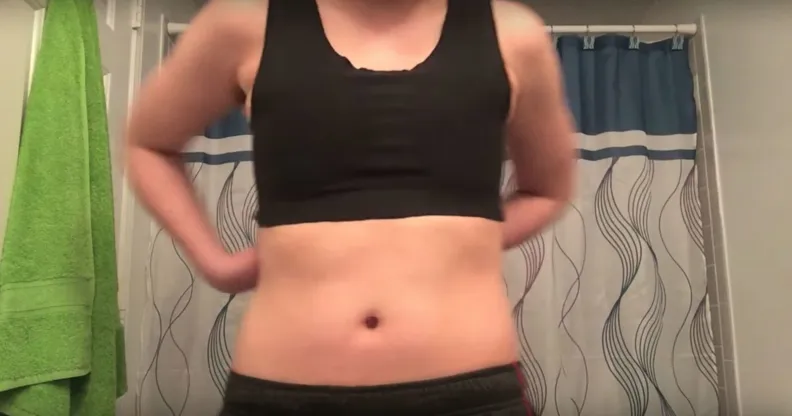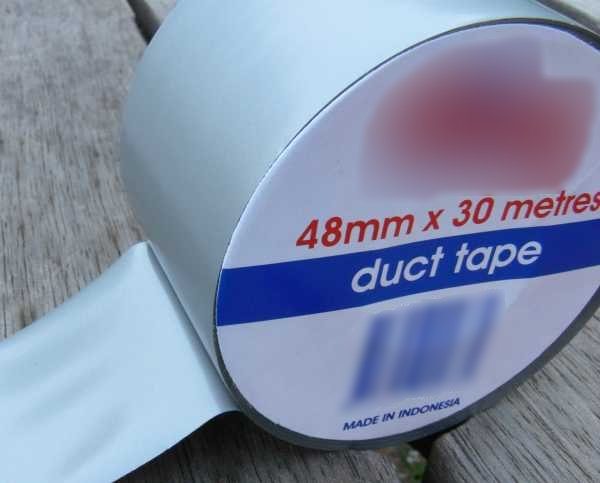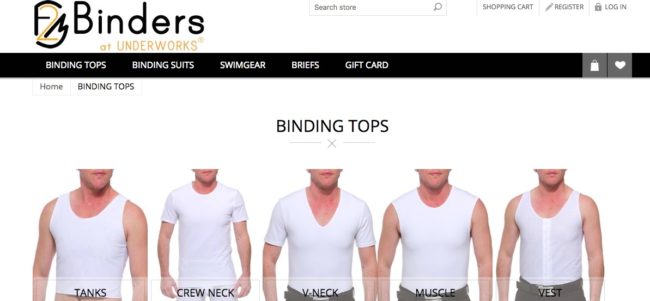Chest binding is an integral part of the transitioning process for lots of trans men – here’s how it works

As you likely already know, chest-binding is a technique used to make breasts appear smaller. Binders are essentially undergarments that bind the boobs to the body.
Usually used by transgender men or non-binary people, binders are very tight and simply create a flatter chest – though they can be extremely uncomfortable and in some cases, very risky.
However, binding is safe if it’s done with care and a bit of research.
Here is a video guide to using binders, with advice from the LGBT Foundation:
First off: Don’t DIY

(Creative Commons)
Binding DIY-style using bandages or tape can cause injury, so those who want to bind are advised to use a proper one. You can buy binders from specialist sites like F2MBinders and Underworks, but it’s worth doing a bit of research.
Just don’t Do It Yourself – using Ace bandages, tape or other DIY items can be incredibly harmful to your body forcing the weight of the breasts to break rib cages and, in some cases, puncture lungs.
Related: Groundbreaking study shows health effects of binding among trans people
What shall I buy?

F2M Binders (F2M Binders website/screengrab)
Binders often come in two styles – full length (so over the stomach) or tri-tops (just under the breasts). You can find plenty of online reviews if you need help with research.
TransGuys.com recommends measuring across the part of your chest that comes out the furthest, as well as the area right below your breasts. You will probably need both of these numbers as a reference when shopping.
Ideally, find an actual shop and try the binder on. If that’s not possible, measure yourself accurately (as above) and shop around.
The bigger the boobs, the harder it’s going to be to get them small – for obvious reasons. Underworks compression tanks, binders, and tri-top binders are recommended for bigger bodies and larger cup sizes.
Don’t cut costs. Obviously this isn’t an option for everyone, but if it is, invest in a decent binder. However, if you can’t afford it, there are binder exchange programmes.
The Transitional Male aims to “provide quality new or gently used binders to Transmen & TransYoungmen, 18 and over (and younger when a parent makes contact) who would otherwise not be able to afford a new binder, at retail prices due to hardship.”
Transgender people on YouTube also auction off their old binders after getting top surgery.
Related: Shop fined for selling a chest binder to transgender boy
How long can I bind for?

Sleeping Beauty (Disney)
According to Qwear, you shouldn’t bind for more than eight to 10 hours a day and should definitely take your binder off before you go to bed – do not sleep in it.
Other sites recommend six to eight hours, while some suggest binding for as few hours a day.
Start out by only binding a couple of hours a day to get yourself used to it.
Again, use your head – if you’re uncomfortable, have a break.
Breathing
Obviously, binders are meant to be tight.
However, TransGuys says you should be able to take deep breaths while wearing one without difficulty. If you can’t breathe, it doesn’t fit. Don’t be tempted to get a smaller size so that you get an even flatter chest – it doesn’t work like that.
Other health issues can include back pain, nerve damage, circulation issues and skin problems – for example, chafing, rashes, soreness and itching.
When you take your binder off, check your skin and make sure you’re not bruised.
Note any changes in your body – the binder could be too tight or you may be wearing it for too long. If you are chafing, try Body Glide which has been designed to help.
Talk to your doctor about any medical conditions before you start binding. And see your doctor if you’re concerned while binding.
How should I wash my binder?

Snow White (Disney)
You should definitely wash your binder. It’s recommended you wash it in the sink with warm water and antibacterial soap or a gentle washing detergent. Try to do it at least once a week.
It needs washing for obvious reasons – binders absorb a lot of sweat and can get stinky, which can make exacerbate or cause skin problems.
Related: Billions introduces non-binary character
The Binding Health Project

National Health Service (Christopher Furlong/Getty)
Related: This pre-op transgender man’s shirtless Instagram photos have gone viral
A groundbreaking study looked at the health benefits and risks of binding among trans people. The study, believed to be the first to look a the effects of binding on trans people, was released by the Binding Health Project at Boston University.
1,800 people were asked about how they bind and the effects it has on their health. More than 97 percent of respondents said they had experienced one or more negative health effect from binding.
The effects included pain, overheating and shortness of breath and fifty people said they were subjected to fractured ribs as a result of their binding.
From those asked in the study, many said they would keep binding despite negative health risks, given the relief it gives them from their gender dysphoria.
Those conducting the study recommended taking “off days” from binding if possible, and to use extra caution when using commercial binders that the correct size and fit is used.
They recommended not using cling film or duct tape for binding.
The study was conducted by the Binding Health Project in order to empower trans people and their medical professionals, by educating about how to bind safely.

